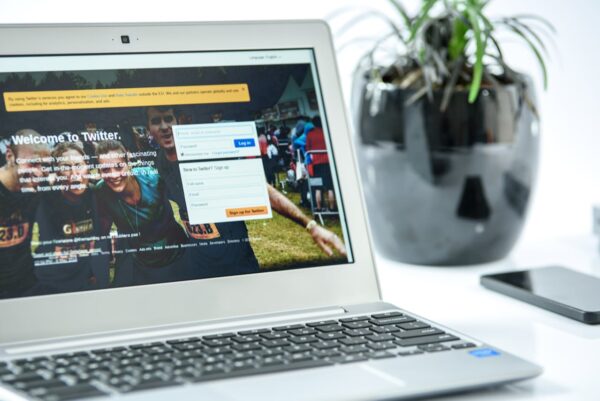Website design and development has been through many changes over the years. Designs that were trending a few years ago are now thought to be inefficient, overdone and clichéd.
Your website should be constructed in a manner that helps improve its ranking and lifts its aesthetic appeal. Here are some emerging trends in website design and development for 2021:
1. Chatbots
Filling out complicated forms to get information about a website is old school and boring. Web users would rather speak to a representative of your company.
Chatbots make your digital interface interactive and for the visitors and prove to be an effective way for them to gain more knowledge about your website. You can place the chatbots options strategically across your website to make the resolution of user queries faster and smoother.
Having chatbots has the added advantage of reducing customer support costs associated with hiring a real person for the job.
2. Voice Search Optimisation
People are increasingly switching from text-based search to voice search. This has already resulted in the development of competent voice search agents such as Siri, Alexa and Google Assistant.
Voice search is an emerging trend and enhances the mobile responsiveness of your company’s website. As web users are becoming increasingly comfortable with this feature, you can eventually consider integrating voice search on your website.
Two of the most popular browsers, Google Chrome and Mozilla Firefox, support websites with a voice search feature. This way, users don’t have to text search on your website after finding your website through voice search.
3. Augmented Reality and Virtual Reality
Augmented Reality (AR) is a web design aspect that allows users to actually test out how a product would look like even before they purchase it. Using AR is a good way of attracting users who like high-quality technology.
AR involves adding pictures or videos to your website to display your product to potential customers. For example, a customer can use a picture of their room to see how the colour of paint would look like on their room’s wall. AR is an efficient way of increasing empathy between users, products and businesses.
With Virtual Reality (VR), you can showcase your products through 390-degree videos. Visitors love to products from all possible angles as it helps them make a more informed choice.
4. Single Page Applications
Single Page Applications (SPAs) are trending as they make your website simple and straightforward. It also makes your website more mobile-responsive.
Single-page sites can be better optimised for mobile screens. Users can scroll through the webpage smoothly and easily find all the information they need.
SPAs improve your website design and development by shortening the loading time of your site. Avoid adding long menus to your website that complicate browser experience. SPAs also reduce the costs of your website and provide information to the users quickly.
Popular examples of SPAs include Facebook, Gmail and Github. They load content using Javascript to avoid reloading the webpage while in use.
5. Bold Colours and Minimalism
2021 is predicted to bring in bold colours and minimalist design. Using colours that are bright and saturated will make your website stand out in comparison with others.
Pairing bold colours with minimalism will make your design grab the users’ attention while being easy on the eyes. Colours can also be used to evoke particular moods to impact human behaviour, for example, blue is usually used to indicate serenity while red emphasises the importance.
Another popular strategy is to use text-only hero image. The ‘hero’ section of a webpage is the upper portion that is visible before the screen ends. A typical background image in the hero section is a trend of the past. It is now preferred to have eye-catching typography with a bold font to attract attention.
6. Use Hand-Drawn Design Elements
Artwork made by a real person adds a human element and tends to be more appealing to users. This kind of design would attract customers precisely because it is not perfect and would add an emotional touch.
Digital graphics and elaborate computer animations can be replaced by hand drawings to remind the users that there is an actual person behind the digital graphic they see on their devices. This change would make your website stand out and retain the users’ interest for a longer period of time.
7. Say No to Homepage Sliders and Carousels
Homepage sliders and carousels were once quite popular integrations to a website to showcase the range of products. They remain common but have proven to be inefficient.
Adding them usually slows down page loading time and push down important content. Another major disadvantage is that they appear and function poorly on smartphones.
Sliders and carousels limit user engagement as people avoid interacting with them. To make your website more efficient, try replacing them with good content, video, or animations.
8. Mobile Optimisation
Nowadays, people are increasingly using smartphones to browse the web as they are handy and efficient. Therefore, making your website mobile-friendly is of the essence.
When users come across a website on their phone that is not compatible, they tend to switch to another one immediately. Make sure your website is optimised to work on all kinds of devices, such as smartphones, tablets and desktops.
To make your website optimised for mobile phones, you can tweak its aspect ratio accordingly and ensure that its contents display properly on small screens. Mobile compatibility can improve your ranking on the search engine results page and help generate more traffic.
Make sure that the navigation bar, menu, and other clickable buttons are in the right places to make it easy for users to find what they require.
9. Prioritise SEO
Search Engine Optimisation (SEO) involves improving the quality and quantity of web traffic to your website through search engines. In order to attract more traffic and make your website rank higher on the search engine result page, make sure you keep your website optimised.
Focus on improving SEO by making sure your website is well structured. Make sure you interlink your web pages well and strategically place enough keywords in your content.
Create a sitemap of your website to help search engine crawlers locate and analyse content and keep track of updates. Other tips include making your domain name and extension stronger and making your website easy to navigate.
10. Monitor Page Speed
Loading time has been an important factor in both user experience and SEO. It should be prioritised if you want to make your website rank better and increase conversions.
Users are likely to abandon a website by clicking the back button if the site takes more than 3 seconds to load. Ideally, it should take no more than 2 seconds to load your website. Some tips to increase page loading time include:
- Reducing the file sizes of images
- Use browser caching tools
- Reduce HTTP requests
- Minimise and merge your files
Website design and development keeps evolving with time. Today, the emphasis is on creating a website that is easy and quick to operate and has a neat design to facilitate users.
Make sure you include clear calls to action (CTAs) that encourage users to convert. Moreover, run A/B tests to keep improving your website and see what works best.



